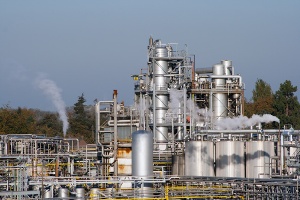 From UL Workplace Safety Blog:
From UL Workplace Safety Blog:
If you had $401 million, what would you buy? How about a satellite, a Picasso, and a roller coaster? Or space flights for you and 1600 of your closest friends? Maybe you could give a dollar to every man, woman, and child in the United States and then bankroll a movie about your generosity, starring Brad Pitt and Angelina Jolie. Or, perhaps you could simply throw the money away.
Throw away $401 million? That’s essentially what the chemical manufacturing industry did in 2012 when 5,300 lost-time injuries cost the industry at least $401 million and 71,000 lost work days. The most common were sprains, strains, and fractures resulting from overexertion, falls, and contact. And tragically, 24 workers (real people) lost their lives that year. Most, if not all, of these could have been prevented.
From an injury perspective, in general the industry already performs better than many other sectors. Your Total Recordable Incidence Rate (TRIR) and Days Away, Restricted, or Transferred (DART) rate are 2.3 and 1.4 respectively, well below U.S. averages. Still, a $401 million yearly loss is no chump change. Neither are the billions of dollars in additional sales needed to recover it. These dollars represent lost opportunities for R&D, multinational expansion postponed, and thousands of potential jobs for chemists and line workers. They also represent the uncountable human cost of pain and suffering caused to workers and their families when your people are injured or killed.
There are a few key steps that chemical manufacturing companies can take to mitigate the risk to workers and recoup their losses:
- Identify hazards through a good Job Hazard Analysis (JHA). Each job function has its own particular risks and challenges. A clear and comprehensive JHA will help uncover unsafe practices and conditions before they cause injury or death.
- Measure and track everything you can through a formal incident management system (IMS) that promotes early reporting and intervention. Electronic and mobile systems are preferred.
- Be proactive and use the IMS to capture and investigate observations and near misses with the same resolve as if they were injuries. These leading indicators are warning signs and are your best chance to improve the process and prevent injuries and illnesses.
- Take corrective action. Fix problems, institute procedures, and educate workers. In-house safety teams can usually guide this process. Outside experts can bring their expertise to bear and eLearning solutions help ensure workers are making safety-conscious decisions.
- Follow up to verify improvement. It’s not enough to assume changes are being made. Companies must ensure that management and workers are following through with improvements. Tracking software can help monitor compliance and point out flaws with implementation.
- Avoid “top-down” approaches where only managers observe and report. Every employee is a potentially rich source of information; no manager or supervisor can possibly be in a better position to observe and report what is happening at the employee/risk interface (the job) better than the employee doing the job.
- Ensure there is no retaliation for reporting — especially for things you do not like hearing.
- Ask everyone on the team to step up and help improve workplace safety. But know that it will not succeed unless the process is credible, transparent, and positive.
The 71,000 work days and billions of dollars in costs and sales lost to pay for injuries will not improve without a chemical manufacturing focus on safety culture. It doesn’t happen by writing a memo, firing “unhappy people,” or continuing the proverbial floggings until morale improves. Real safety culture is a lifestyle change for the organization that starts with an absolute commitment to safety and proceeds with a process to measure the data that matters. Investing in safety can save the chemical manufacturing industry enough money to finance the 2014 payroll for both the Yankees and the Red Sox. Most importantly, it can help ensure that workers in this crucial industry return whole to their families at the end of each day.



